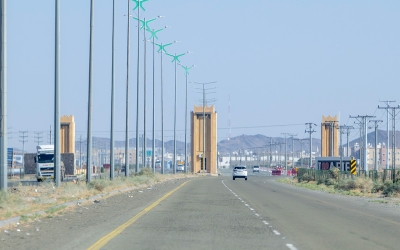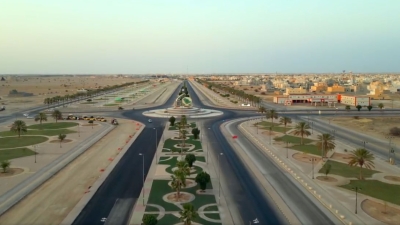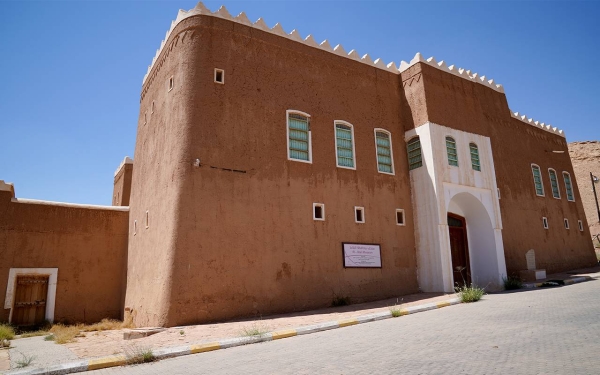
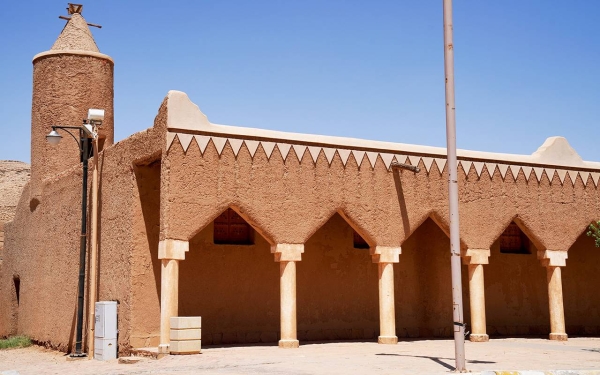
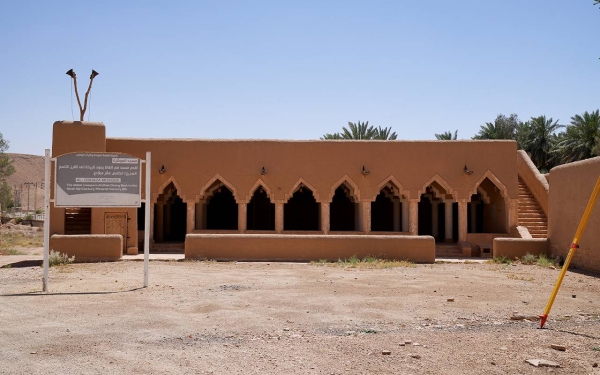
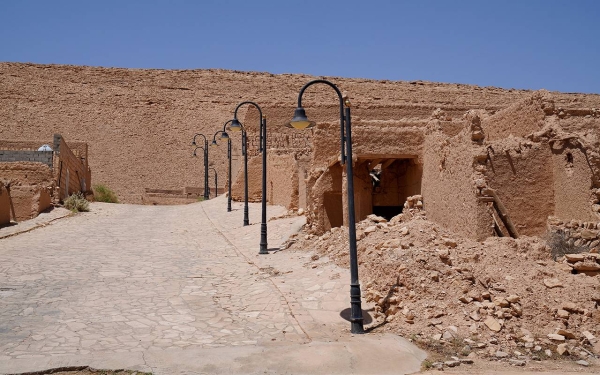
Al-Ghat Governorate (romanized: Muḥāfad͟hat Al Gẖāṯ) is a category (A) governorate of Riyadh Province, in the center of the Kingdom of Saudi Arabia. It is located northwest of the city of Riyadh. It covers an area of 5,500 km, and its population is about 10,799 people, according to the 2022 Saudi Census.
Naming of al-Ghat
According to historical accounts, al-Ghat was given its name in reference to the Arabic term laght al-Sayl, which describes the sound and intensity of floods. Situated between high mountains, its valley experiences torrents rushing out, roaring, and pounding when rain falls. The governorate was formerly known as "Loughat," but nowadays it is referred to as "al-Ghat."
Location of al-Ghat Governorate
Al-Ghat Governorate is situated northwest of the city of Riyadh, approximately 240 km away. Spanning an area of 5,500 km, it is bordered by Az-Zulfi Governorate to the north, al-Majma'ah and Shaqra Governorates to the south, al-Majma'ah Governorate to the east, and Qassim Province to the west.
Thirteen centers are affiliated with the governorate: al-Ghat, al-Ghat al-Kadim, Mulayh, Aba al-Salabikh, al-Abdalliah, al-Musadiyah, al-Abdali, al-Wase'ah, Odhaidan, Wadi al-Ghat, Hamadat al-Ghat, al-Saylah, and Umm al-Ishash.
The terrain of al-Ghat Governorate is diverse. It includes mountainous areas, the most notably known are the Tuwayq Mountains, plains including Sahl al-Hamada, and a desert such as an-Nufud al-Kabir. Its climate is moderate most of the year, rainy in winter, and hot and dry in summer.
Transportation services in al-Ghat Governorate
King Khalid Airport in Riyadh is the closest airport to al-Ghat Governorate, located about 230 km away. It is an international airport with a capacity of about 28.5 million passengers annually. Highway Sixty-Five traverses the governorate’s territory, serving as the main transportation route within the governorate and providing access to and from al-Ghat.
Historical and touristic sites in al-Ghat Governorate
Al-Ghat Governorate is home to many historical and tourist sites, making it a perfect tourist destination, including al-Qiltah, Halifah, al-Deira, al-Marqab, and Khashm al-Arnyah. Its monuments include the heritage village, which encompasses many tourist attractions, including the popular market, in addition to the center of productive families, the outdoor square, and the exhibition hall.
The governorate is also home to al-Ghat Museum, one of the prominent sites in the heritage town, as it once served as the headquarters of the Emirate of al-Ghat. Its owners, the sons of Nasser Bin Saad al-Sudairi, offered it to the Tourism Authority to be qualified as a museum for al-Ghat Governorate. The museum consists of two parts: one is old, while the other was established in 1966. It depicts the social life and history of the governorate throughout all eras, its popular heritage, and the contribution of its residents to building the Saudi State. The museum contains collectibles, manuscripts, and maps, distributed across halls that display archaeological and heritage pieces.
One of the governorate’s landmarks is al-Rahmaniya Library, a cultural center situated in al-Ghat Governorate. Established in 2003 by the sons of Abdulrahman al-Sudairi, it operates as a branch of the Abdulrahman al-Sudairi Foundation. Nestled amidst al-Arniyeh Orchard, its architecture reflects the rustic character of the surrounding rural environment in al-Ghat, showcasing distinct Najdi elements such as mud buildings and Najdi arches.
Within the framework of developing the tourism potential in al-Ghat Governorate, a tourist lodging project was established, comprising environmentally friendly heritage houses. Furthermore, al-Ghat National Park project spans an area of twenty-five km, characterized by its mountainous environment and picturesque valleys adorned with approximately thirty thousand acacias, Ziziphus spina-christi, and other species planted there. Additionally, al-Oyun region is slated for future development and expansion programs aimed at enhancing tourism in the governorate.
Archaeological discoveries in al-Ghat Governorate
In 2011, the Saudi Commission for Tourism and Antiquities (now the Ministry of Tourism) discovered numerous artifacts in al-Ghat Governorate dating back to the Stone Age, indicative of significant human activity in the region during prehistoric times. In the northeast of al-Ghat, on the western bank of Wadi Markh, a rocky plateau was unearthed, rising above the earth's surface. At its summit, there is a scattered collection of Thamudic inscriptions and stone drawings, portraying various animal forms such as horses, camels, ibexes, and ostriches, as well as human and geometric shapes, all created using the incision method
The archaeological survey also revealed another plateau located between Umm Shaddad and Wadi Markh, east of al-Majma'ah and al-Ghat al-Kadim road. It has rock drawings, one of which resembles a sun disk, executed using the incision method. These antiquities indicate that they date back to the Middle Paleolithic (Mousterian) period, prevalent eighty thousand years ago. The stone tools were used as cutting and scraping tools, and so on.
Circular stone graves were also discovered, some of which contained erected columns and stone circles, serving as human habitation, while others were repurposed as animal enclosures. Additionally, a well with a circular form was carved into the rock.
An international award for al-Ghat Governorate
In 2011, al-Ghat Governorate received one of the international awards from the World Tourism Organization, specifically the Best Heritage Town Rehabilitation Project Award, recognizing its profound historical significance. This accolade is bestowed upon distinguished public figures and tourism projects worldwide. The organization conferred this award upon the heritage town rehabilitation project in al-Ghat, spearheaded by al-Ghat Co-operative Society. The project operates under the supervision of the Saudi Commission for Tourism and Antiquities, now known as the Ministry of Tourism.
Related quizzes
Related articles

